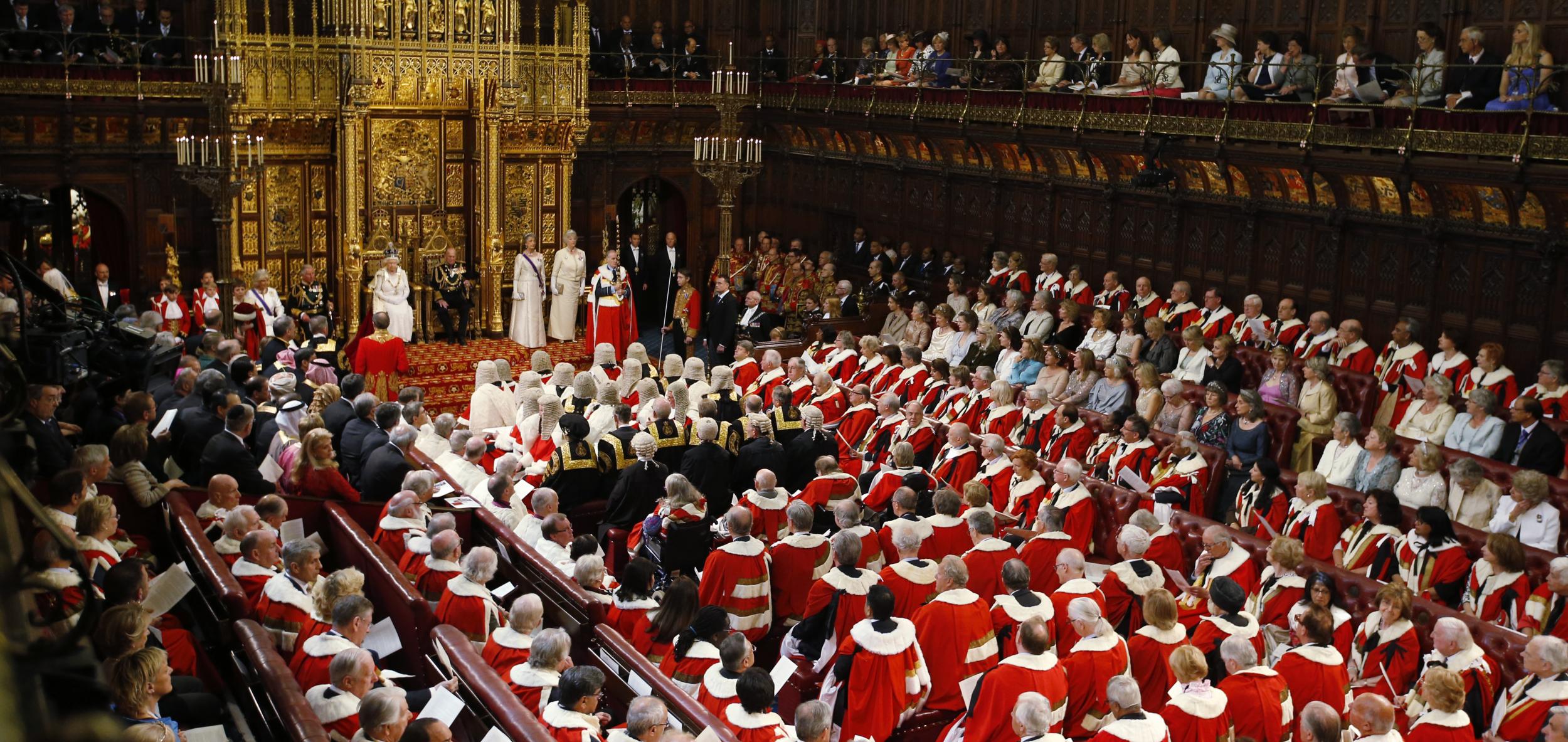There is one really big problem with the House of Lords
While the Lords is too old, too male, and marred by its hereditary peers, the biggest problem with the chamber is the way its members are appointed

In many ways, there isn’t a great deal wrong with the House of Lords.
As an institution, it’s been estimated to cost £93 million per year, of which £20 million is paid to the Lords themselves for the days they turn up to work – attendance is optional – and for travel costs. (The salaries of their 400-plus staff and upkeep on their wing of the Palace of Westminster must also be paid.)
But £93 million is a pittance as part of a government budget of £740 billion, or £740,000 million. (It’s 0.01 per cent, or 1 pence in £100.)
The total basic salary bill for 650 MPs costs twice as much as all of the effectively part-time salaries paid out in the Lords.
The typical Lord attends the House on 3 out of every 5 days it sits. Put another way, about 500 of the 814 currently eligible Lords attend each day the House is in session (36 other Lords are currently ineligible, so there are 860 members in total).
Given the Lords chamber can scarcely fit 500 members, and a Lord is meant to apply their relevant expertise to legislation, this isn’t necessarily a bad thing. Need all 814 Lords debate and vote on every issue?
So each member costs about £285 in fees and expenses each time they turn up, going by the most recent data (that’s Nov 2014 to Oct 2015). And given the typical Lord turned up 81 times during those 12 months, they earned about £23,000 for working seven days a month.
In other words they earned roughly as much as the Brit on an average salary, albeit for working one-third as many days. But the Lords might justly claim that challenging and correcting the legislation that governs 65 million people is not an ‘average’ job.
You could argue none of this is particularly problematic (although the Electoral Reform Society would disagree).
Yet some Lords argue they are now a more rigorous check on legislation than the Commons, which sits for fewer hours than it ever has, while the Lords still sits until 10pm or later when in session.
And the current party balance of the Lords even reflects the Tory-Labour margin at the 2015 election, with 43 per cent of members who aren't "Crossbenchers" or "Unaffiliated" being Tory and 36 per cent Labour.
Although both main parties and the Lib Dems (with 18 per cent) are overrepresented, and Ukip have no Lords despite winning 13 per cent last May.
But there is one aspect of the Lords which is beyond belief
I don’t mean the continued presence of its 89 hereditary peers or 26 bishops, though both are anti-democratic and anti-secular relics of a distant past; or the fact that only a quarter of the House are women; or that the average age of a Lord is just under 60; or that its members are unelected.
The biggest problem is with the way David Cameron, and Tony Blair before him, have appointed its members.
In 1999, Blair culled 555 of the chamber’s 647 hereditary peers, reducing the size of the chamber by more than 40 per cent and leaving it with 690 members, five in six of whom were life peers.
As part of his reforms, Blair created the House of Lords Appointments Commission, a body that was meant to appoint the majority of future Lords.
By doing so the Commission would not only rigorously nominate and vet each potential member, but ensure they made the House more reflective of the UK and prevent the Prime Minister from filing the chamber with party hacks.
Yet in the nearly two decades since, just one in ten Lords has been appointed by the Appointments Commission.
Blair, Brown and Cameron have collectively appointed 652 new peers since 1999, making our upper house twice as big as any other with a bicameral legislature in the Western world.
Just 67 have been appointed by the Appointments Commission. Over half were meant to be, according to the Royal Commission report commissioned by Blair in 1999 and published in 2000 (known as the Wakeham Report until it, like so many other Royal Commission reports, disappeared into an archive).
Under David Cameron that rate has reached its lowest ever, with just 12 of his 244 appointees – 5 per cent – being appointed by the Commission.
The Commission has only ever appointed crossbenchers, who aren’t unaffiliated to either party, and has never appointed a former MP. Its focus is on appointing a breadth of members, who come from a wide range of fields.
Cameron, like Blair before him, has instead stuffed the House with around 40 new Lords a year, one in four of whom are former MPs.
When a famous MP loses their seat, or a well-known public figure falls from grace, they are invariably offered a seat in the Lords. As Tanya Gold recently put it, “The Lords resembles a collection of elderly celebrities aboard a ghost train.”
It’s left the House old, male and partisan – exactly what Blair’s reforms were meant to change. He and Cameron soon realised it was too good a piece of patronage to pass up.
Now, with the chamber second in size only to the Chinese upper house, reform remains as distant as ever.
Join our commenting forum
Join thought-provoking conversations, follow other Independent readers and see their replies
Comments